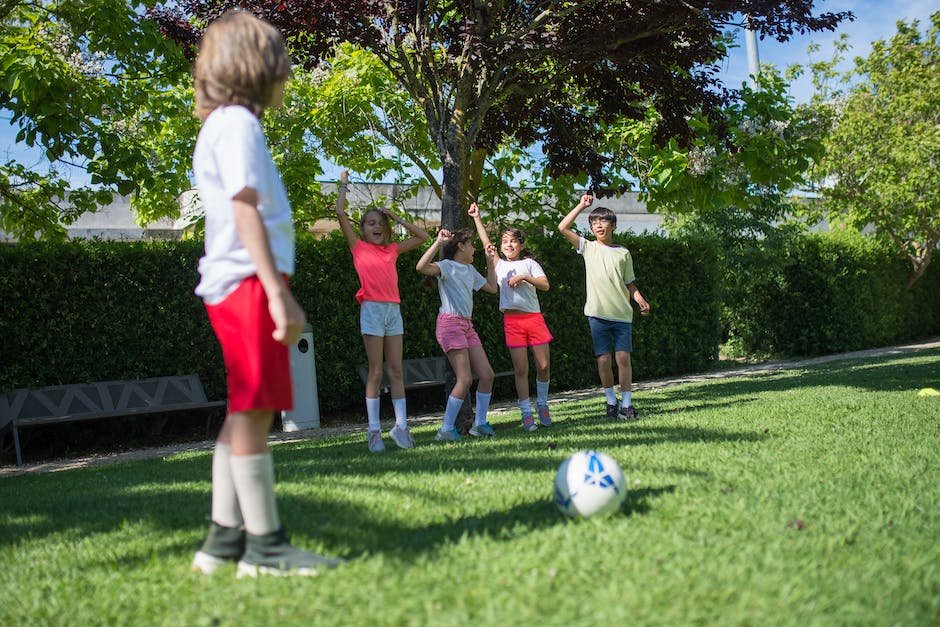
Autism, a complex neurobehavioral condition that impairs social communication and interaction, is also known for impacting an individual’s ability to easily adapt to change and their physical flexibility. It’s a unique challenge that parents and their children with autism continually grapple with. However, with a proactive approach such as flexibility training, it’s possible to reclaim control and better handle these difficulties. The benefits of flexibility training stretch beyond mere physical improvements – it also aids in enhancing their ability to adjust to new situations and attitudes. This information is instrumental in navigating the journey of autism and understanding the positive impact flexibility training can offer.
Understanding Autism and Its Impact on Flexibility
Title: Understanding Autism: Impact on Child’s Physical and Mental Flexibility
Welcoming a child into your family is like unfolding a tale of joy, discovery, and learning. When we fully accept and embrace a child’s unique characteristics, we unravel the beauty of individual diversity. Understanding a child’s needs, especially those with Autism Spectrum Disorder (ASD), becomes paramount and deepens the bond of love and connection.
ASD, being a developmental disorder, can largely influence a child’s physical and mental flexibility. By unraveling these influences, we can create spaces of acceptance and provide the best for our beloved children.
Beginning with physical flexibility, children with autism often face certain motor challenges. This can reflect as difficulty in coordinating their movements, imitating others, or even responding to basic physical tasks. Unlike their peers, they may often face challenges in displaying varied and flexible gestures.
Simple activities such as climbing a staircase, buttoning a shirt, or riding a bike may seem more taxing for them, primarily because mastering the movement of their muscles might not come naturally to them. Additionally, they frequently tend to struggle with Hypotonia, also known as reduced muscle tone, which may make their bodies appear “floppy.”
Moving onto mental flexibility, it’s equally essential to comprehend that ASD affects how an individual thinks, learns, and problem-solves. Imagine preferring your favorite meal to be served in a particular dish every time. Transfers to routines and thought processes are visible in children with autism too. They often prefer predictability and typically struggle with adjusting themselves to changes, no matter how insignificant.
Such mental inflexibility frequently emerges as difficulty in shifting focus from one task to another or understanding others’ perspectives. For example, a slight change in their routine, like a swapped snack or a displaced toy, can turn their smiles into tears. Their minds instinctively yearn for the comfort of patterns, a routine, possibly becoming a coping mechanism.
But it’s necessary to remember that every child echoes a different tale. The severity and manifestations of symptoms may differ widely among children with autism. Some might display exceptional learning skills while facing challenges in social communication, whereas others may be immensely creative while experiencing physical struggles.
Uncovering how autism affects a child’s flexibility isn’t about recognizing restrictions; instead, it’s about understanding their uniqueness. Once we comprehend their needs, we can add more colors of happiness to their lives. With appropriate therapeutic interventions, home-based support, and a whole lot of love and patience, we can guide our children towards a path filled with learning and progress.
Remember, our children aren’t defined by autism, but it is merely a page in their book. They are pioneers stepping into a world they perceive differently, ready to conquer it in on their own, unique and beautiful way. So, let’s stride along with them on this path, cheering them, loving them, and celebrating their every single victory.

Benefits of Flexibility Training for Children with Autism
Without a doubt, children with autism possess an inherent brilliance, illuminating many areas of their individual lives in unique yet extraordinary ways. It’s absolutely integral for parents, teachers, and caregivers to help cultivate this brilliance by fostering the child’s holistic development – and a part of this process involves exploring the potential benefits of flexibility training.
Every child with autism, much like any child, is musical in terms of their heart’s rhythm, the melody of their thoughts, and the symphony of their emotions. Flexibility training, including both physical and cognitive exercises, can assist in tuning these beautiful harmonies.
On the physical front, flexibility training aids children with autism by improving their balance and coordination. This type of training incorporates elements of movement-based activities, such as simple stretching exercises or yoga sessions specifically designed for children with autism. The simplicity and fast pace nature of these physical exercises can help increase muscle strength, giving the child more control over their motor functions. Regular exposure to these activities encourages the child to explore movement in new ways, promoting physical strength, motor skill development, and ultimately, independence.
But the magic doesn’t stop there. Flexibility training also shapes crucial cognitive flexibility, which is key in growing adaptive behaviors. By disrupting and gently challenging set routines with a variety of new tasks, mental flexibility is enhanced, facilitating the child’s ability to adapt to new situations and solve problems. I’m sure we all agree, that problem-solving skills are not just beneficial – they are essential.
What’s more, there’s a symbiotic relationship between flexibility training and self-regulation. When children with autism engage in flexibility training, both physical and cognitive, they kickstart their ability to calm themselves when distressed, thereby reinforcing emotional self-regulation – a skill that’s not simply beneficial, but rather pivotal within their developmental journey.
The beauty of flexibility training can be seen in the way it helps children with autism harmonize their highly-structured world, providing them with a language through which they can communicate – a symphony they have, themselves, composed. Throughout this process, children with their unique rainbow of brilliance are supported to orchestrate their own symphony and dance to their own rhythm, empowering their journey towards greater independence and ability flexibility.
Yet flexibility training is not a magic wand. It’s an opportunity to begin the dance, that lifelong journey of understanding and adapting to the melodies and rhythms that define our lives. And above all, remembering that each step forward matters, no matter how big or small. So, here’s to you for championing in your child’s corner as they cultivate their flexibility and bloom into all they are designed to be. The family journey in navigating autism can be challenging, but also profoundly beautiful. After all, it’s through the dance of life that our individual and collective brilliances truly shine.

Effective Flexibility Exercises for Kids with Autism
Once we comprehend the unique features our little ones with autism bring into our lives, we delve into finding the best ways to fill their world with abundant possibilities. Flexibility exercises are tools that provide substantial benefits, whether it’s physical strength or mental resilience.
Flexibility exercises for kids with autism are different from those for neurotypical children, requiring creativity, patience, and a dose of cheerfulness. Here are some suitable exercises:
- Animal Walks: Inspired by different animals, these games add a sense of fun to flexibility training. For example, “Bear Walks” can help improve arm and leg coordination while enhancing core body strength. “Frog Jumps” encourage full body movement, improving physical flexibility and muscular strength.
- Stretchy Band Games: Stretchy bands are a novel tool often loved by children. They encourage muscle engagement in a fun, low-impact way. You could twist, pull, or wrap these bands, facilitating the development of gross motor skills and flexibility.
- Yoga Stories: Yoga provides a plethora of opportunities for physical and psychological growth. Combine it with storytelling, and you’ve got a sure-fire way of developing flexibility while keeping your child entertained. Each story could mimic a yoga sequence such as “Sun Salutations” or “Tree Pose.”
- Obstacle Courses: Creating simple obstacle courses at home using cushions, chairs, and tables can aid navigation skills and improve flexibility. Encourage your child to go over, under, or around the objects, promoting a range of motion exercises in a fun and engaging way.
- Dance Therapy: Music naturally appeals to many children with autism. Dance therapy, by extension, encourages self-expression, rhythm identification, and, of course, flexibility. The incorporation of props such as scarves or ribbons can add an extra layer of fun and motor skill development.
Children with Autism Spectrum Disorder might need slightly more time to get used to these exercises. It is crucial to provide them with enough space and patience, nurturing their growth at their own pace. Remember, every tiny step forward counts as a massive victory.
Embracing the individuality of children with autism also involves fostering their independence and their ability to adapt in an ever-changing world. Through appropriate physical exercises, we can contribute to this continuous journey of growth, enhancing their inherent brilliance and enabling them to truly shine.
Moreover, it’s crucial to make all activities enjoyable and fun, as a child’s enthusiasm often stems from their environment. Light-hearted, Elmo-guided stretches or groovy Wiggles-powered dance moves can amp up the fun quotient.
Ultimately, the journey of navigating autism as a family brings its own mosaic of challenges and beauty. As we embark on this journey, armed with understanding, strategies, and heaps of love, we look forward to watching these incredibly special children flourish in their own exceptional way.

Tips for Parents: Implementing Flexibility Training at Home
Motivating children with autism, or indeed children of any background, requires that we approach their exercise routines and activities with creativity, enthusiasm, and a keen awareness of their individual strengths and preferences. Kids with autism have unique ways of viewing the world, and with that comes an exciting potential for growth and learning.
Flexibility training for children with autism is a truly multifaceted pursuit, involving not just the physical realm, but also cognitive, emotional, and social development. One powerful technique parents can use is the integration of multisensory activities into their child’s routine, encouraging engagement through sight, sound, taste, touch, and movement.
Autism isn’t a barrier to fun, engaging fitness; remember, fun is one of the best motivators for practice, repetition, and continued participation. Channel your kiddo’s love of a favorite story into an action-packed yoga routine. Use their favorite music or love for animals in developing dance routines or an ‘animal walk’. All this while they unknowingly work on increasing their flexibility and strength.
Creating a safe and comfortable environment at home that encourages physical activity is vital. It might involve turning your living room into a mini-gym or setting up structured obstacle courses in your backyard. By doing this, you give your child a fun, engaging space where they can explore their physical capabilities, improve their motor skills, and most importantly, enjoy their time exercising.
It’s also crucial to remember the importance of patience in this process. It’s about developing a routine that works best for your child, letting them lead at their own pace, and celebrating small victories along the way. Make sure the activities are enjoyable and fun for them. Maybe they love the feel of stretchy bands, or perhaps they delight in the stories you weave into their yoga routine. Embrace these fun aspects to keep them engaged and motivated.
In the end, it’s about both fostering independence and ensuring the child is comfortable in their unique way of moving in the world. This process may be filled with trials and errors, challenges and victories- but the results are undeniably worth it. Seeing your child grow, foster independence, and navigate the world with more ease is the ultimate reward.
Remember, every child with autism is beautifully unique, and the path to developing flexibility at home will look different for each one. What works for some children might not work for others, but the key is to keep exploring, adapting, and above all – keep making this journey about joy, growth, and a celebration of your child’s unique abilities.
As parents and caregivers, our role is to guide and support our children’s development. Incorporating flexibility training into their routine is a vital process that can significantly enhance their life quality. It’s a beautiful, challenging, and magnificent voyage. And at each step, we learn, we adapt, and we grow with our children, valuing them for who they are in their exceptional way.
In the end, what could be more rewarding than witnessing our children’s growth, resilience, and happiness as they explore the world and flourish in their own, distinctly special ways? Let’s join hands and navigate the world of autism; it’s a journey filled with learning, laughter, love, and endless possibilities.

Success Stories of Flexibility Training in Autism

Embracing flexibility training as an avenue for developing both physical agility and adaptability to change in children with autism not only improves their coordination but also their overall quality of life. It’s a journey filled with trials, but the triumphs that come along provide a clearer insight into its potential benefits. By embracing these exercises and incorporating them at home, parents can play an active role in assisting their children to handle the quirks and hurdles of autism more effectively. The inspiring success stories shared herein are a testament to the power of such training, hopefully providing motivation for those exploring this therapy. Life with autism is indeed a different experience, but with the appropriate tools and mindset, the road to improvement is well within reach.




